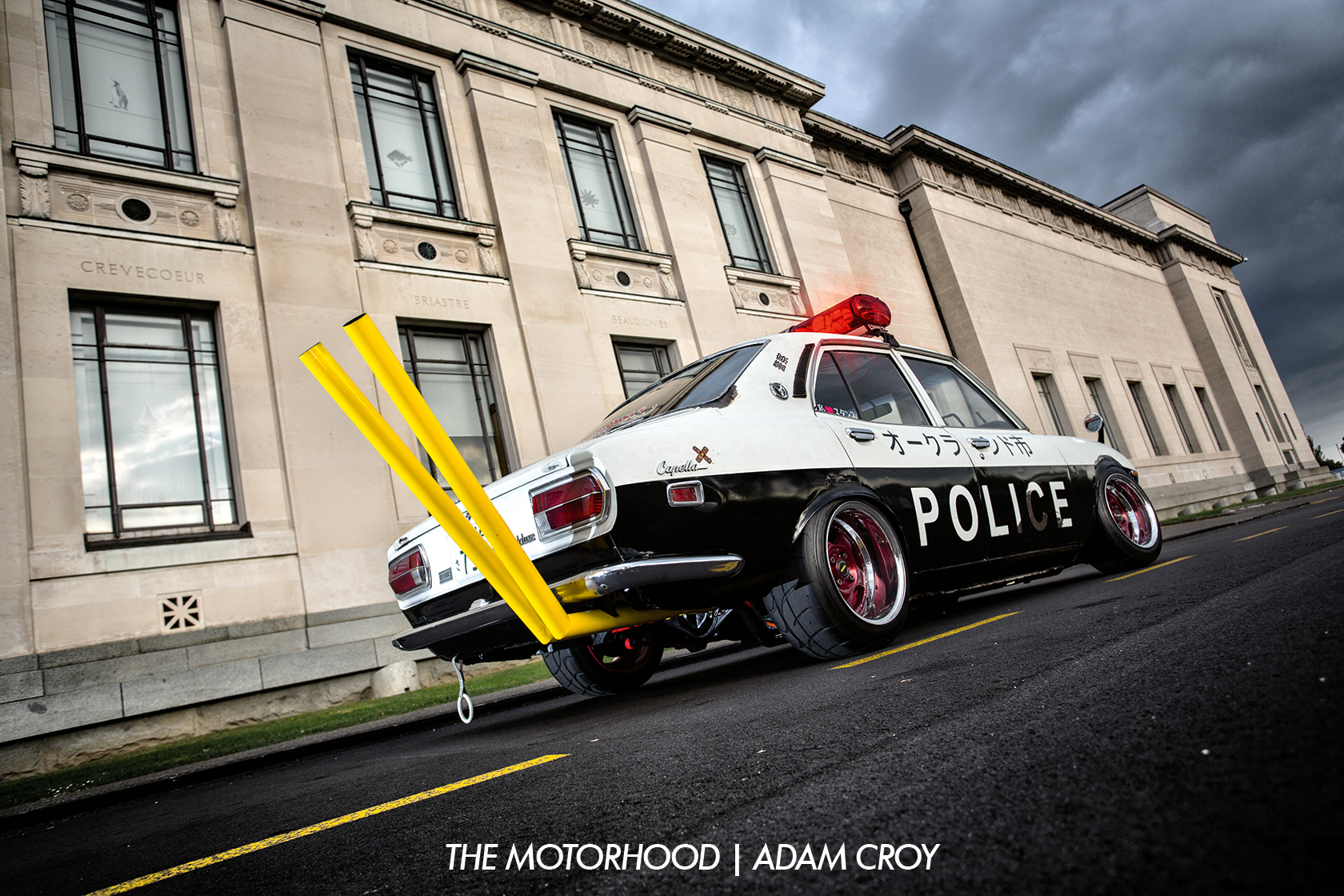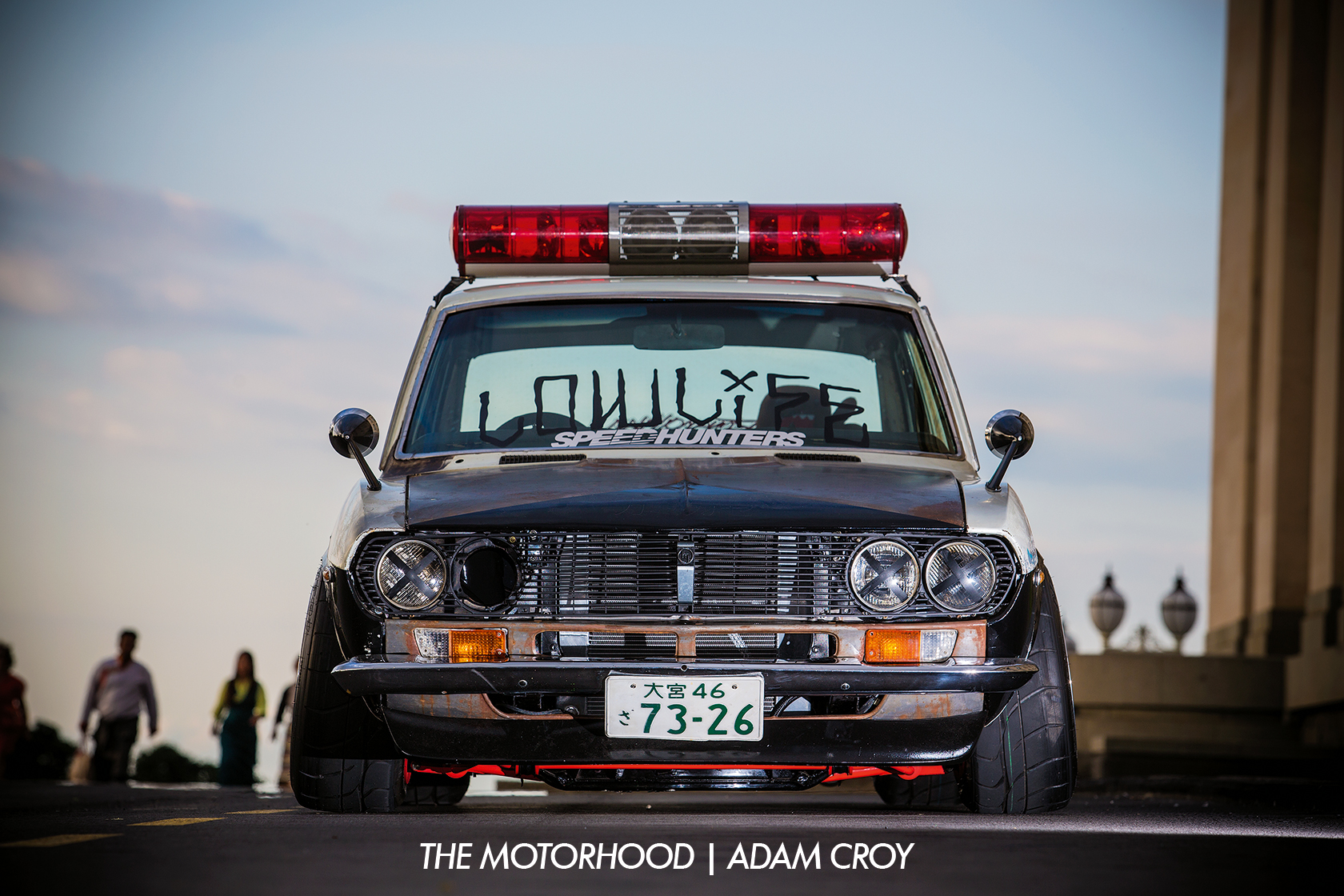
The 2014 V 4&Rotary Nationals marked a couple of cool milestones for the NZPC team, and not the kind you would expect. No, our personal cars didn’t clean up come award time, but it was the first time I, the assistant ed., got to go for a ride in a car I have been involved in building since day one. I have known the owner, Mark Strawbridge, since kindergarten and we have been messing around with cars together since we could drive. He is one of those guys who has never owned anything standard in his life. Right from his first car, a Mini with a pair of 15-inch subs stuffed in the boot, he has had a long list of builds, including, sadly, two cars stolen within months of being completed. But all those builds were nothing compared with what his 1974 Mazda 616 Capella would evolve into.

It was purchased in 2007 as a bone-stock Mazda Capella complete with auto 1600cc fresh off a boat from Australia, and I can still recall the day we drove it, complete with seized caliper, all of 1km to his partner’s flat. Had you told Mark that day he wouldn’t drive it again until 2014, at which point it would look like it does now, he would have laughed at the seemingly absurd notion. But as one thing or another got in the way, this build would come to stretch out, test the patience of all involved, and empty his wallet time and time again.
Plan A was pretty befitting of the New Zealand rotary style in 2007, with a set of Lenso RS5s (in 17×7-inch, of course) and a 13B turbo power plant, plus it was lowered on a set of custom adjustables. For the first 12 months or so, progress was slow, as the car lived an hour north of Mark. It wasn’t until 2009, when both the car and the Mark moved back to Auckland, that things started to progress. Thankfully, those Lensos were soon ditched in favour of a set of 15×7-inch Simmons F90s, and we got about building all the add-ons for the engine. Although it was coming together pretty fast in our eyes, in reality, the build was still four years away and miles from what the finished project would become.

It would be a two-year stint working in Sydney that would really begin to shape the project. The keys and car were entrusted into my hands, so I could continue to work away while Mark started to spend some of that Australian gold he was now earning. “I came across a set of B45 Simmons for only $200; the chick selling them was angry at her ex-partner and looking to sell his wheels. I grabbed them, unbolted the inner barrels, which I sent over to New Zealand, and sold the remaining pieces the next day for double my money.” This meant we could ditch the 30mm spacers the car had, and go bigger with the dish. The fronts now had four inches of dish and measured eight inches wide, with the rears also sporting four inches of dish and a guard-popping 10-inch width. This required a little massaging to the rear quarters.
Simple as that may seem, two rolls in the entire guard blew apart in a shower of pink bog: it was rotten! The whole thing had been made with 1kg of bog, with pieces of galvanized plate slapped on for good measure. The fact that there was some rust in the car was not news to Mark, it was just the extent of it that came as a surprise to us all. You can imagine how that phone conversation went.

So the car was shipped off to SD Performance, where Stephen Dean was given the task of removing all the rust-ridden steel. This included rebuilding the entire lower rear windscreen panel, all four doors, the inner guards, and the three layers of the right rear guard. The sheet-metal work wouldn’t finish there either, with a new boot floor, raised gearbox tunnel, raised rear floor section, and smoothed firewall all sorted over the next year or so.
Mark had grown tired of the complexity of the 13B turbo idea, and when a deal to swap his turbo combination for a fresh 12A PP race engine came up, he was the first to sign on the dotted line. “I was getting to the point where I could see the dollar signs ringing in my mind; to get the turbo build finished it was going to cost a ton. I thought that by going with the NA package the car would see the road a lot quicker than it did,” he says.
It was also about this time that a homesick Mark packed up and moved back to New Zealand to kick the build into high gear. A good mate, Robin Holl, had just moved into a workshop and fitted a hoist. This would become the Capella’s new home for the next eight months, with plenty of late-night working bees as we rebuilt each and every component. This included Robin building a fully polished stainless-steel exhaust system with twisted equal-length primaries, which really set the tone for the entire chassis; nothing that wasn’t either powder coated or polished would find its way back on.

The original custom Bilstein coilovers were cut up and sent off to Ride or Die MFG, which shortened them to lower the car even more. This presented somewhat of a wheel-clearance issue that would only get worse when the wheel width was again upsized for the third time during the build. “I came across a bunch of NOS [new old stock] barrels a guy was selling. This meant we could put the old 10-inch–wide rears on the front and build a new set of bigger 11-inch–wide rears with five inches of dish. The only problem now was finding 15-inch tyres to fit a rim that wide,” Mark says. “No one really makes anything in the right size. We had to go with Nitto NT01 semi-slicks, as it was basically the only tyre that came wide enough, with a small enough sidewall.”
A week out from the first outing at the 4&Rotary Super Show in 2012, we found ourselves in the paint booth spraying the engine bay and interior in engineering grey. This gave the boys only four days to reassemble everything. With the bare shell on the hoist and parts from the powder coaters taking up the entire workshop floor, the next week was nothing but a blur. The car didn’t run and it didn’t have a big-dollar paint job, but it made its public debut.

Following the show, the momentum continued. The bird’s nest attached to the vintage Link ECU that the package came with found the bin, and the boys set about wiring in a Link G4 Lightning just ahead of the V 4&Rotary Nationals 2013.
Mark explains: “I was at my wits’ end as to what to do with the paint — the factory white now had rust repairs all over it and I didn’t want to go for the 10K paint job. That’s when the Zero Fighter idea came about.” A graphic designer by day, Mark whipped up a few concepts, ordered some stickers to be cut, and the Capella was transformed into a WWII-era Japanese Zero fighter.

Between those nationals and the 2014 event, the cooling system was rebuilt using all -16 AN fittings and a new radiator, while the oil-cooling system received the same treatment. The engine itself underwent a full unexpected rebuild, putting the project back eight months and forcing a rush to the finishing line as usual.
The Zero Fighter theme was now played out, and the purchase of a new toy (a 1961 Chev Bel Air) meant no paint job was in sight. The 616 needed a change, but to what? The inspiration would come from within the very pages of this mag, with the feature on Liberty Walk boss Kato-san’s own shakotan police-inspired GC110 Skyline build.

“The vinyl was the easy bit; it would be finding the right lights that would prove the hardest — Japanese police cars run full red lights and it needed these to look right,” Mark says. “Unbelievably a set of genuine 1970s Japanese police lights came up for sale in Wellington. Some guy had been using them as his mobile DJ rig, complete with working sirens and blue light. The blue light went in the bin and the police lights straight onto the roof.
The car made its ‘completed’ debut, and we got that all-important first drive out of the way, which, by the way, featured a jammed-on caliper just like the very first drive, thanks to the hydraulic handbrake.
Plans now are to take it to the next available track day and have some fun with it before deciding whether to put it through compliance. I can see the cert list now: too low, too loud, and breaking whatever laws they have about imitating a police vehicle. In the meantime, the track is calling, and there is a full set of semi-slicks to wear through.






